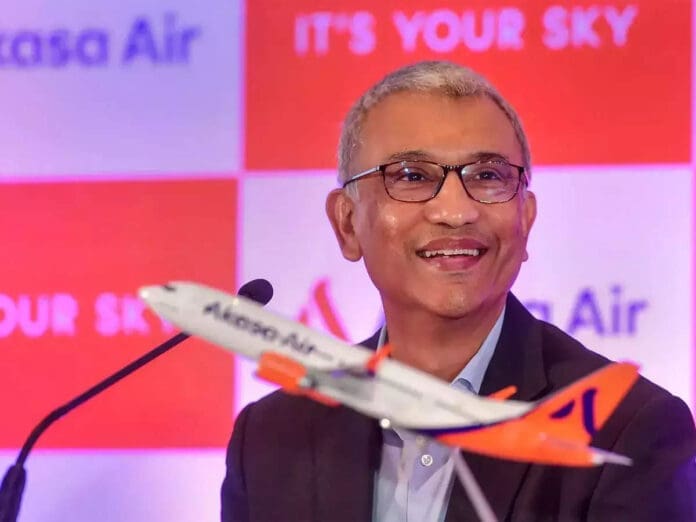Vinay Dube, CEO of Akasa Air, exudes confidence in the airline’s future amidst rapid expansion plans and a competitive aviation landscape. Established less than two years ago in August 2022, Akasa Air has quickly grown its fleet to 24 Boeing 737 MAX aircraft, operating over 900 weekly flights across domestic and international routes.
Market Confidence and Expansion
Dube emphasizes that the aviation market in India is substantial enough to accommodate Akasa Air’s growth ambitions. “If we focus on ourselves, the market is big enough for us to succeed,” he asserts confidently in a recent interview with PTI. Despite acknowledging competition, Dube maintains a steadfast focus on internal growth strategies rather than external pressures.
Strategic Initiatives and Service Offerings
Currently holding a 4.8 percent domestic market share, Akasa Air has expanded its international footprint to include Doha, Riyadh, and soon Abu Dhabi, with plans for Jeddah, Kuwait, and Medina. The airline prides itself on offering a range of ancillary services, including pet-friendly travel options and a flexible approach to in-flight amenities to cater to diverse passenger preferences.
Employee and Pilot Management
With over 4,000 employees, Akasa Air has temporarily paused pilot hiring while ensuring adequate staffing for its existing fleet. Dube reassures stakeholders about pilot availability and the airline’s commitment to managing pilot fatigue through stringent operational standards and thoughtful rostering practices.
Future Fleet Expansion and Profitability Goals
Looking ahead, Akasa Air anticipates adding more than 200 aircraft to its fleet over the next eight years, supported by a firm order of 226 Boeing 737 MAX planes. Co-founder Aditya Ghosh underscores the airline’s trajectory towards profitability, highlighting operational reliability, customer satisfaction metrics, and a robust load factor as indicators of sustainable growth.


Recent Comments